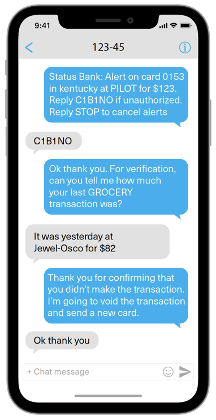Industry Thought Leadership
How You Can Protect Your Consumer amidst the Global Coronavirus Pandemic
April, 2020In today’s rapidly fluctuating world, many people are facing a great deal of uncertainty. The rise of the coronavirus crisis has not only spread the disease but also concerns about the future.
During these confusing times, people prey on this fear and seek to extort others. At Syniverse, we’re working with our customers to prevent this fraud before it happens and resolve it in real-time.
Fraud is rampant. In the latest Nilson Report Annual Fraud Statistics, worldwide payment card fraud is expected to surpass $35.5 billion in the next five years. In recent years, the United States has accounted for about a third of this fraud.
With this level of fraud only increasing due to the coronavirus, it’s critical for companies to react quickly to protect their customers. There are several ways companies can help safeguard their consumers from fraud during this crisis.
Educate Your Consumer to React to Important Notifications
Building trust and understanding with your consumers is essential to minimizing fraud cases. Communicate your commitment to prevent fraud on your website, on social media as well as through traditional communication channels. Stress the importance of reacting quickly to fraud alerts you send. The sooner your consumers alert you to fraud, the more easily you can work to stop or prevent fraudulent charges.
Implement Identity Services
To determine how to best reach your consumer, you need to determine their mobile carrier and/or phone line type for the phone numbers you’re seeking to reach. Scammers will try a variety of methods to steal consumers identities. If you notice mobile carrier changes, a bad actor could be trying to redirect the number to a different phone. In this case, use multiple forms of contact to identify your consumer.
In addition to checking for carrier changes, also look for phone line type. Is the phone number a landline or mobile? For mobile an SMS message to verify spending can be delivered quickly to consumers. For landline numbers, you’ll need to call to verify transactions. By removing landlines numbers, you won’t waste spend sending text messages that will bounce and not reach your consumer. You can learn more about identity and authentication capabilities here.

Send Timely Alerts
Speed is everything when it comes to fraud detection and prevention. If a larger than normal charge occurs or one outside of your consumer’s region, you need to act quickly to either remedy the issue or ensure the charge was in fact from your consumer. Once you’ve pre-established line type for numbers, you can quickly react to potential fraud with text-to-voice capabilities for landlines and SMS messages for mobiles. These alerts need to happen in real-time, ideally while the customer is still at the register.
Allow for Fallback to Other Channels to Reach Consumers Quickly
One size does not fit all. If you consumer does not take action via one channel, such as SMS, reach out to them through a different channel, like voice. Having fall back solutions in place further cements your ability to prevent fraud.
Soon, consumers can look forward to receiving next generation messaging like rich communications services (RCS) to communicate with companies. With RCS, companies will be able to have richer, more engaging conversations with consumers while also leveraging artificial intelligent chatbots. Mobile messaging is a perfect way to reach consumers on any mobile channel with effective, personalized communication with consumers.
While the world we’re currently living in is full of complexities and bad actors seeking to take advantage of the terrible situation, companies can work with their consumers to keep them protected from fraud attacks.

